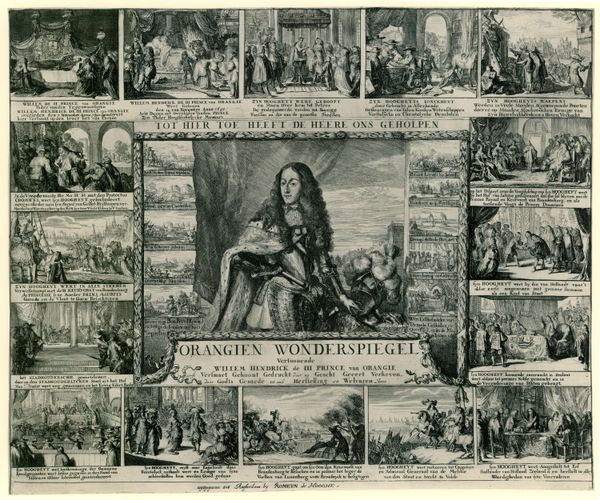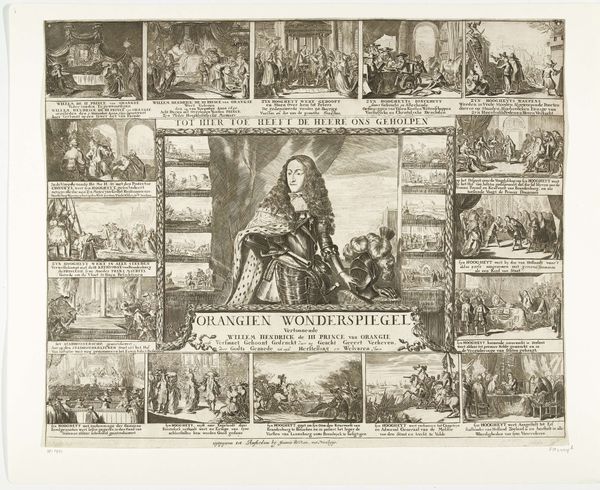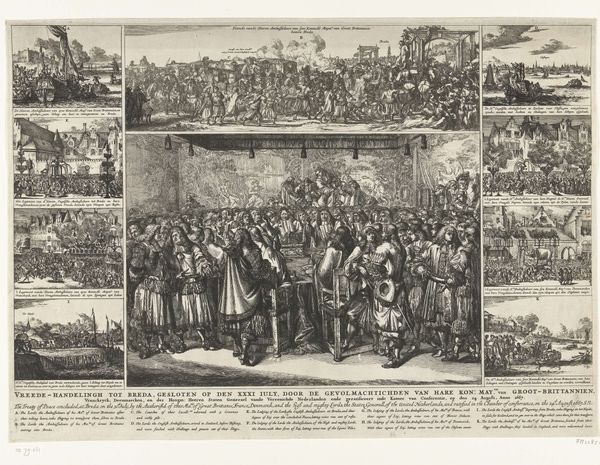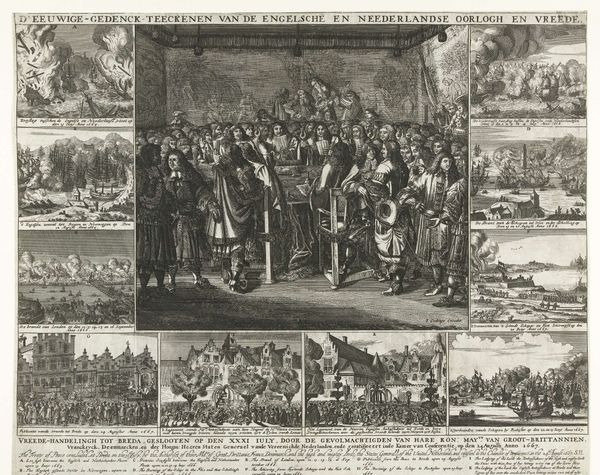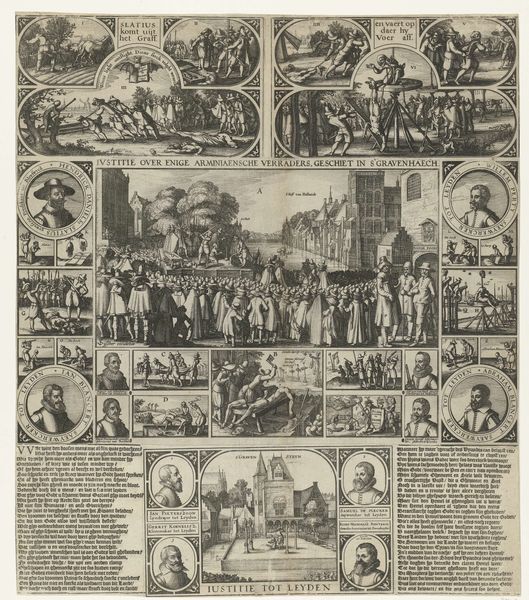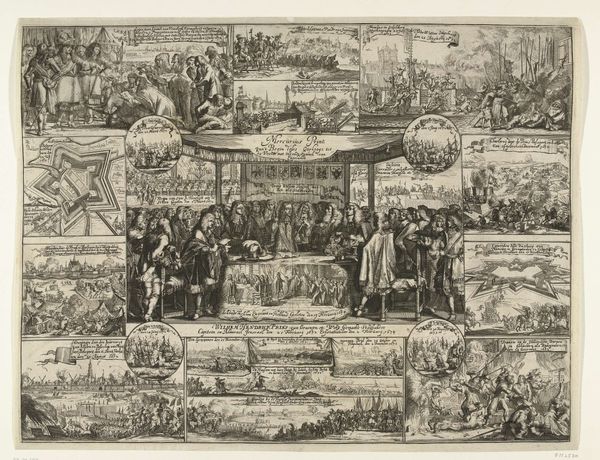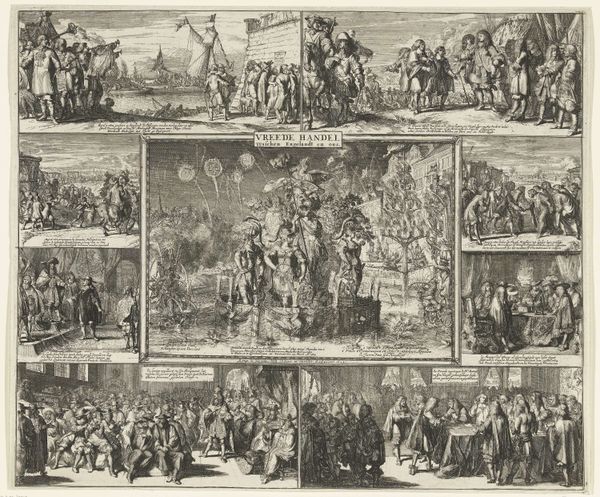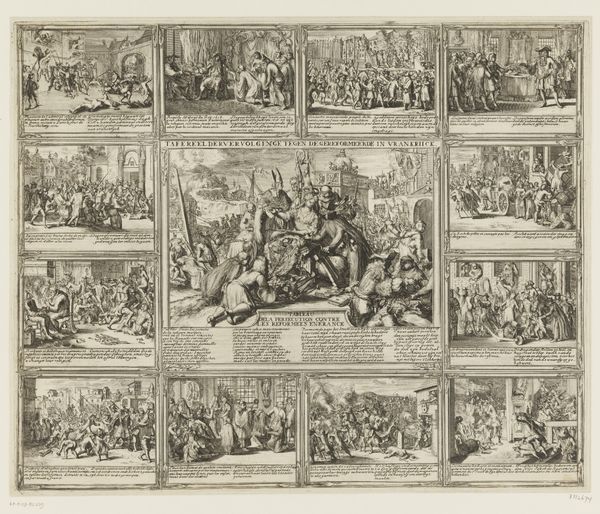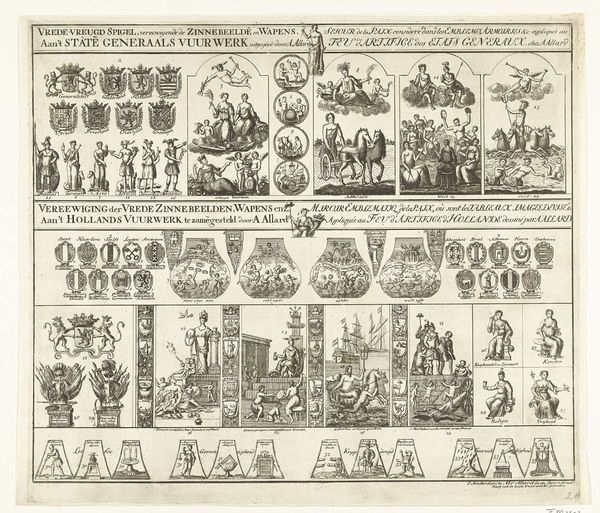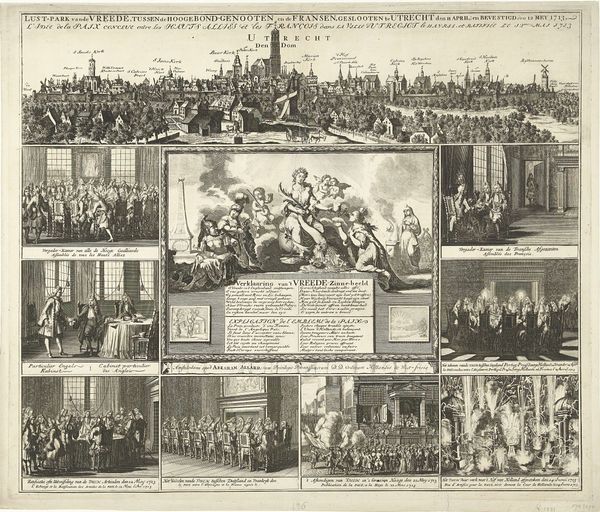
print, engraving
#
portrait
#
narrative-art
#
baroque
# print
#
history-painting
#
engraving
Dimensions: height 480 mm, width 570 mm
Copyright: Rijks Museum: Open Domain
Editor: So, here we have "Witten Wonder Spiegel," or "The Wonder Mirror of the De Witt Brothers," created in 1675 by Romeyn de Hooghe. It's an engraving, quite detailed. I'm immediately struck by its somber tone, like a memorial. The small scenes framing the brothers give it this narrative feel, but to what end? How do you interpret this work? Curator: It feels like walking through a hall of echoes, doesn’t it? De Hooghe doesn't just show us portraits; he offers a meditation on power, reputation, and mortality. I read this piece, created after the brutal murder of the brothers De Witt, as both political commentary and personal reflection. Look closely – the surrounding scenes aren’t just decoration, but fragmented memories of their lives, achievements, and, ultimately, their tragic downfall. Do you sense the tension between honoring them and hinting at the controversies that led to their deaths? Editor: I see what you mean! It’s not a straightforward celebration. There's this weight of something unresolved, almost accusatory. So it's less about pure admiration, and more like a... a complex reckoning? Curator: Precisely. It makes you think about how history is written, doesn't it? What stories get told, and whose voices are amplified. I wonder, when you see this, what version of events comes to mind first, the official or the whispered truths. Which narrative sticks with you longer? Editor: That's powerful. I was so focused on the individual scenes that I didn't realize the print asks questions instead of giving answers. Curator: Art doesn’t always give answers, does it? Sometimes, its truest purpose is simply to spark the conversation, to unveil perspectives unseen. I wonder if the artist felt he was seeking justice or adding another layer of intrigue with this piece? Food for thought, indeed.
Comments
No comments
Be the first to comment and join the conversation on the ultimate creative platform.
